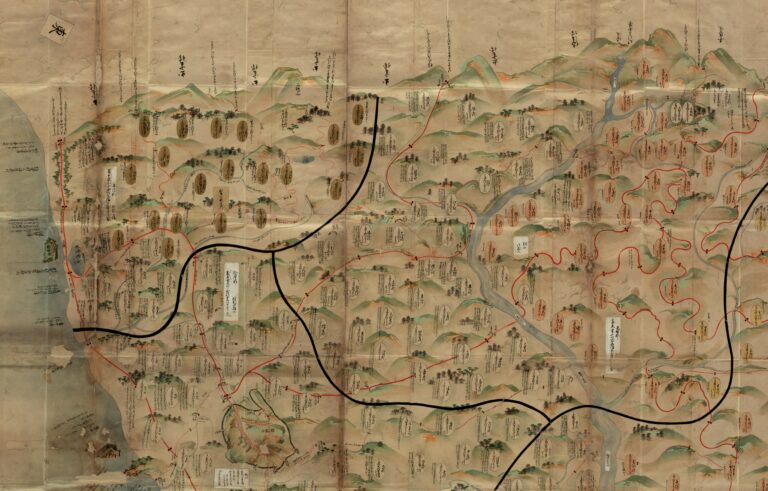Commons and Compromise: Regulating Resource Conflicts in Japan (17th – 19th Century)
ReForm Scholar
This project analyzes the use of compromise in legal settlements (naisai) for mitigating resource conflicts in early modern Japan, and how it was transformed through Western knowledge in the second half of the 19th century. By comparing resource conflicts from the three areas that were governed as commons (mountains, rivers and channels, and the ocean), the entanglements between resources, social structures, and legal practices are revealed.
Differing from arable land, which was subject to taxation and thus allocated to landowners and taxpayer entities, the access to mountains, rivers, and the ocean was complex in early modern Japan. A web of layered rights to the different kinds of resources existed, which involved village collectives, feudal lords, temples and shrines, and the Shogunate. The resource governing structures more often than not transgressed existing political structures. For mitigating resource conflicts, naisai evolved as a form of legal settlements to balance and regulate the access to resources by the many actors, mainly based on reaching compromises.
Compromise as a central practice for mitigating resource conflicts is traced through periods of social and environmental transformations, which were accompanied by the production of agricultural knowledge. In the 17th and early 18th centuries, the Shogunate conducted large-scale clearings of land accompanied by the construction of rivers and irrigation channels. This created growth of arable land, but also scarcity of water and fertilizer obtained from the diminished forests. In the 18th century, a growing population had to be sustained on the now stable amount of land, leading to an “industrious revolution” by organizing labor force and resource use effectively. But by the beginning of the 19th century, an agriculture crisis emerged that was exacerbated by natural disasters. The establishment of the modern Japanese state and the influx of Western knowledge in the second half of the 19th century transformed ideas and practices on resource extraction as well as legal access.
The project relies on the analysis of written records. Mainly litigation records containing accounts of naisai and compromise are examined, which are supplemented by administrative records, contemporary scientific literature and media coverage. Sources are selected for the three areas that were governed as commons in premodern Japan: mountains, rivers and channels, and the ocean. The case studies should represent the complexity of the respective resource system: On the one hand, conflicting or contradictory affordances (for example, a river affording transportation, fish, or irrigation), and on the other hand, different kinds of access rights and influence of the involved social groups.
The main objective of this project is to analyze the relationship between the materiality of the resources, the social structures, and the development of naisai as a legal practice. Naisai have been mostly examined from a legal history perspective. Although resource conflicts have been acknowledged as a main field of litigation, the effects of the materiality on the social organization and practices are yet unclear. By comparing different resource systems and their conflict settlement mechanisms, this project not only adds to the understanding of resource governance in early modern Japan, but also bears relevance for contemporary debates on impending resource conflicts in a world with complex resource networks.

